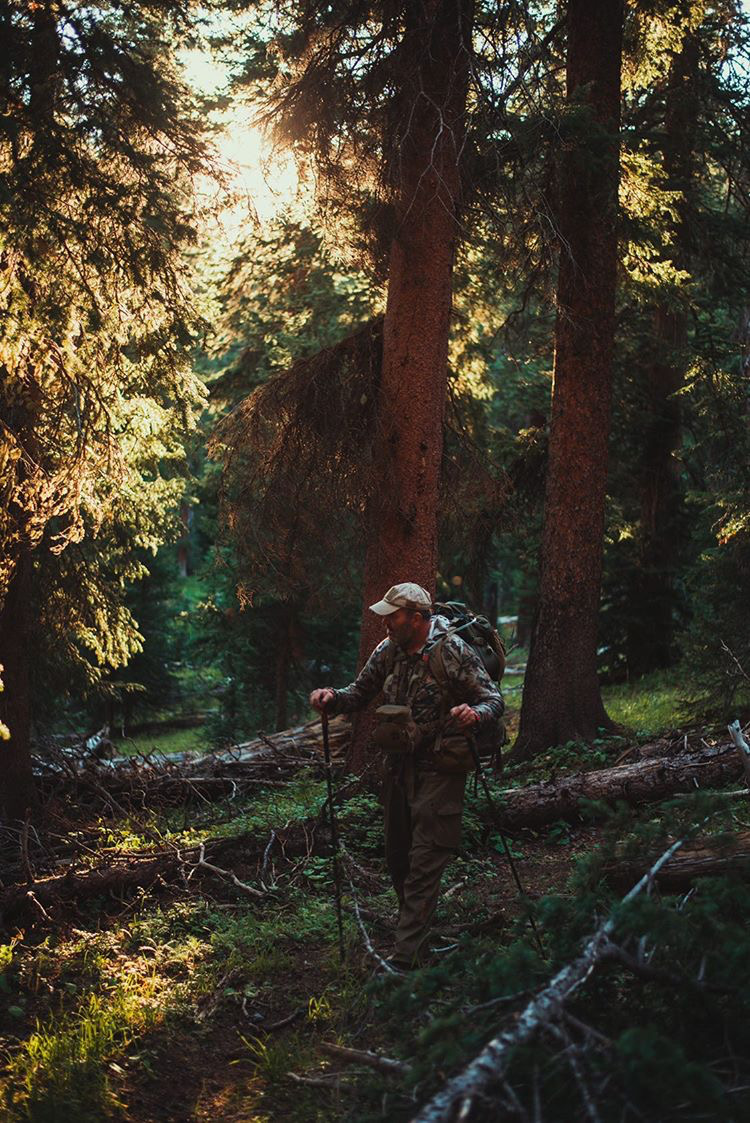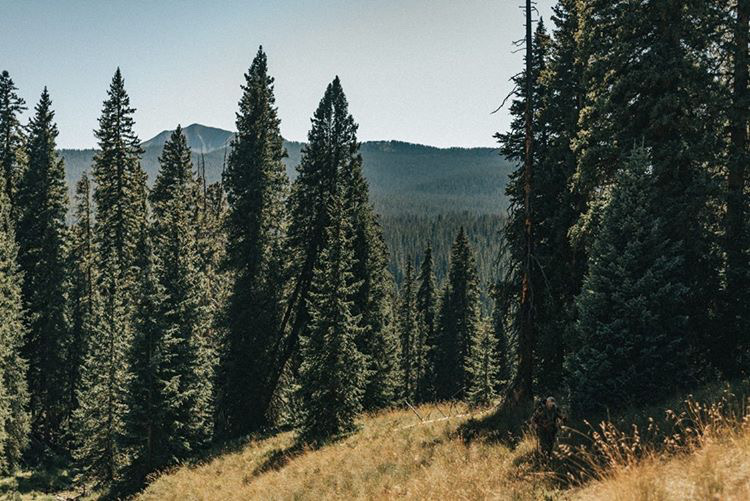Whether you’re cruising ridges for high-country whitetails, or humping mountains for elk, some smart packing prep will have you in great condition to handle whatever situation the hunt throws at you. Below I share five steps to better pack training that will have you prepared for the mountain in the fall.
Don’t Just Hike and Ruck
While it’s totally true that nothing specifically prepares your body for the rigors of tramping over ridges and meandering through valleys than actually just doing those things, if we’re only doing those things we’re limiting our longevity and potentially setting ourselves up for failure.
Loading up our pack and sauntering down the trail places predictable demands on our bodies—shoulders, spine, hips, knees, and ankles are all stressed. While those demands aren’t inherently bad or good, they can easily accumulate into overuse injuries. Feet that aren’t prepared can end up with plantar fasciitis, spinal discs can put pressure on nerves, and hips that aren’t prepared for the stress can develop a host of issues. All of these potential issues can be the result of overuse with under preparation. And that dog, ladies and gents, won’t hunt.
We have to do things that break the pattern of loading weight in our packs and going walking. In the simplest sense, that means doing different kinds of exercise. To stay robust and resilient to the demands of packing, our bodies need to move in different directions and experience different types of stress. That means strength training, mobility training, power training, and conditioning that varies from loaded hikes.
You don’t have to develop Herculean strength—in fact it might be counterproductive in consideration of the goal—but an appreciable level of strength makes your body resilient. The same is true for all of the other types of training I listed above. Building them each into your offseason plan will help you bear the stress of packing with much more resiliency.
There’s one more thing I want you to keep in mind. The game is long. And while you need to prepare for the demands of the fall ahead, you also have to consider all of the falls ahead that will lead you into your later years. If you want to hit the trail with the same vigor you have now, you’re going to have to build a body that’s strong enough to maintain itself over the course of decades. Please, don’t just think short-term. A comprehensive training plan will help you stay healthy through the years.
Take Care of Your Joints
Consistently performing a few, simple mobility exercises goes a long way toward keeping your joints healthy. When we pack, our joints are mostly constrained to small ranges of motion and go through the same motions repeatedly. This leads to the overuse injuries I mentioned in the last section. But that’s not the only danger.
I have crisp stack of hundos that says you’ve heard the term, “use it or lose it” before. Well, that’s true for your joint range of motion. If you don’t consistently ask your joints to move through big ranges of motion, your brain decides those ranges aren’t important and “cleaves” them from the repertoire. The brain likes to save energy, and if it doesn’t need a strategy to deal with a certain situation, it’s going to ditch it. Sounds science-y and interesting, but why is it important for packing?
Well, do you ever trip and fall? Of course, you do. It’s going to happen again, and your joints are likely going to end up in a funky position. If they haven’t recently been moved through full ranges of motion, there’s a good chance you’re going to get hurt—or hurt worse than you should have been. Not to place another bet with you, but I’m going to lay down another stack of hundos that says the last thing you want is to hurt your hip in a fall when you’re packing out.
Here are some simple exercises that you can do every day to take care of your joints while moving them through the biggest ranges of motion possible. They’re called CARs—that stands for Controlled Articular Rotations. I’ve included them for the hips, shoulders, and spine.
Limit Heavy Pack Training
I have some friends that used superhero-esque training to prepare for mountain hunts. I’m talking ninety to one-hundred pounds strapped to their backs every week while hitting steep inclines and boogying up the trail as fast as possible. While those friends were successful during their hunts at high altitudes, they had surgeries soon after. The cumulative stress of hammering their bodies led them right into injuries. Now, I’m all about having scars—they’re cool. But having surgery to get them isn’t.
There’s a difference between practice and playing the game—and you don’t have to play the game during every practice session to be ready for game time. Smart football coaches don’t practice full speed with their teams all week. They use mostly half speed drills and the focus on strategy, not cracking helmets and pads. We can apply the same logic to pack training.
The game is the pack out. You have no choice but to take the necessary trips to get your meat out of the field and back to camp. That might mean strapping one-hundred pounds to your back and cruising on shoe leather for miles—and doing that several times. But to be prepared for the game, you don’t have to play it all the time. If you do play the game all the time, it’s likely that you’re going to stress your body beyond its ability to recover, and you’re going to get hurt. (Head back to paragraph one of this section for a nod to what happens when you can’t recover from your training.)
So, what to do? Pack mostly light and moderate weights and consider your terrain carefully before deciding what training loads to use. Accrue lots of “practice” miles and your body will adapt well enough to handle the game. Now, you can play a short game every once in a while, just to get used to the loads. But you only need a few scrimmages per off-season, and they should be after accruing lots of practice miles.
Plan Your Miles
Last section we talked about accruing practice miles. The simplest way I’ve found to do that is to set mileage goals by quarter of the year. I start with 100, easy terrain miles during the first quarter of the year, while increasing mileage count, difficulty of terrain and load intermittently as the year progresses toward hunting season. By the end of the summer, we’re on terrain that’s as similar as possible the terrain we’ll be hunting (that’s easy for you folks that hunt locally), and up to 200 or so miles per quarter. That rounds out to be about sixteen miles per week when it’s all said and done—totally doable and a lot of fun in the process.
Use Time as Your Ally
Listen, I don’t want to sound like your dad telling you to save for a rainy day, but I’m about to sound like your dad telling you to save for a rainy day.
Start your packing training now. I’ve been a strength and conditioning coach for folks from all walks of life—from NFL linebackers, to high school athletes, to Tier 1 tactical operators—and the biggest mistake that folks make is waiting too long to start training. The result is a big rush that pushes too hard and leaves the person unprepared—either they get hurt during training from pushing too hard or they just don’t have enough time to prepare their body for the rigors of their activity.
Remember, you’re not in just for this fall, but all the falls after that. That requires smart, consistent prep. Whether you’re climbing into sheep country or tramping your way across the tundra for caribou, don’t wait until right before your trip to get ready. Start now and give yourself enough time. Better yet—consistently train throughout the year so that you always have a general level of preparation. Not only will you increase your likelihood of longevity, but you’ll be ready in the case that an impromptu trip pops up.

Photo: Peter Gutsche/Tatlow Creative
In Conclusion
Give yourself enough time to build a robust frame that can handle the demands of the mountain. But be smart. Don’t just hammer the trail with heavy packs. Hoist some weights, take care of your joints, and hit the track. If you start now and stay consistent, you’ll be prepared to carry your haul off of the mountain.





